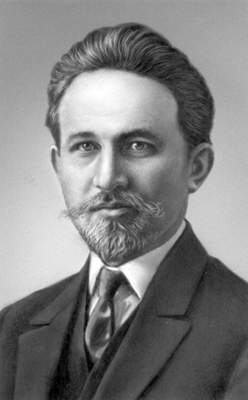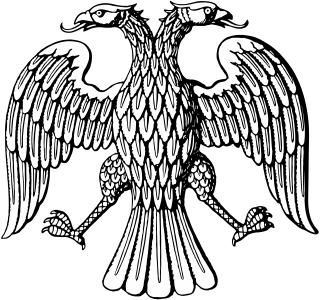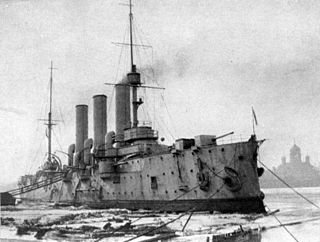
The Russian Revolution was a period of political and social change in the Russian Empire, starting in 1917. This period saw Russia abolish its monarchy and adopt a socialist form of government following two successive revolutions and a bloody civil war. The Russian Revolution can also be seen as the precursor for the other European revolutions that occurred during or in the aftermath of World War I, such as the German Revolution of 1918–1919.

The Russian Revolution of 1905, also known as the First Russian Revolution, began on 22 January 1905. A wave of mass political and social unrest then began to spread across the vast areas of the Russian Empire. The unrest was directed primarily against the Tsar, the nobility, and the ruling class. It included worker strikes, peasant unrest, and military mutinies. In response to the public pressure, Tsar Nicholas II was forced to go back on his earlier authoritarian stance and enact some reform. This took the form of establishing the State Duma, the multi-party system, and the Russian Constitution of 1906. Despite popular participation in the Duma, the parliament was unable to issue laws of its own, and frequently came into conflict with Nicholas. The Duma's power was limited and Nicholas continued to hold the ruling authority. Furthermore, he could dissolve the Duma, which he did three times in order to get rid of the opposition.

Mutiny is a revolt among a group of people to oppose, change, or remove superiors or their orders. The term is commonly used for insubordination by members of the military against an officer or superior, but it can also sometimes mean any type of rebellion against any force. Mutiny does not necessarily need to refer to a military force and can describe a political, economic, or power structure in which subordinates defy superiors.

The Spithead and Nore mutinies were two major mutinies by sailors of the Royal Navy in 1797. They were the first in an increasing series of outbreaks of maritime radicalism in the Atlantic World. Despite their temporal proximity, the mutinies differed in character. The Spithead mutiny was a simple, peaceful, successful strike action to address economic grievances, while the Nore mutiny was a more radical action, articulating political ideals as well, which failed.

The Russian battleship Potemkin was a pre-dreadnought battleship built for the Imperial Russian Navy's Black Sea Fleet. She became famous during the Revolution of 1905, when her crew mutinied against their officers. This event later formed the basis for Sergei Eisenstein's 1925 silent film Battleship Potemkin.
Anatoly Nikolaevich Lamanov was one of the central figures of the 1921 Kronstadt rebellion in the RSFSR.

Matvey Ivanovich Skobelev was a Russian Marxist revolutionary and politician.

The Kiel mutiny was a revolt by sailors of the German High Seas Fleet against the maritime military command in Kiel. The mutiny broke out on 3 November 1918 when some of the ships' crews refused to sail out from Wilhelmshaven for the final battle against the British Grand Fleet that the Admiralty had ordered without the knowledge or approval of the German government. The mutineers, who saw the planned battle as a futile "death voyage", took over Kiel with workers' and soldiers' councils and then helped spread them across Germany. The German Revolution that was triggered by the councils swept aside the Hohenzollern monarchy within a few days, brought about the end of the German Empire and led to the establishment of the Weimar Republic.

The Royal Indian Navy mutiny or revolt, also called the 1946 Naval Uprising, was a failed insurrection of Indian naval ratings, soldiers, police personnel and civilians against the British government in India. From the initial flashpoint in Bombay, the revolt spread and found support throughout British India, from Karachi to Calcutta, and ultimately came to involve over 10,000 sailors in 56 ships and shore establishments. The mutiny failed to turn into a revolution because sailors were asked to surrender after the British authorities had assembled superior forces to suppress the mutiny.

The Chilean naval mutiny of 1931 was a violent rebellion of Chilean Navy enlisted men against the government of Vice President Manuel Trucco.

The Bangladesh Rifles revolt was a mutiny staged on 25 and 26 February 2009 in Dhaka by a section of the Bangladesh Rifles (BDR), a paramilitary force mainly tasked with guarding the borders of Bangladesh. The rebelling BDR soldiers took over the BDR headquarters in Pilkhana, killing BDR director-general Shakil Ahmed along with 56 other army officers and 17 civilians. They also fired on civilians, held many of their officers and their families hostage, vandalised property and looted valuables. By the second day, unrest had spread to 12 other towns and cities. The mutiny ended as the mutineers surrendered their arms and released the hostages after a series of discussions and negotiations with the government. Prime Minister Sheikh Hasina, who returned to office less than two months before the revolt, was widely praised domestically and internationally for her handling of the mutiny. However some criticised her for not ordering an armed raid of the BDR Rifles compound. The Daily Star commended "her sagacious handling of the situation which resulted in the prevention of a further bloodbath".

The All Russian Constituent Assembly was a constituent assembly convened in Russia after the February Revolution of 1917. It met for 13 hours, from 4 p.m. to 5 a.m., 18–19 January [O.S. 5–6 January] 1918, whereupon it was dissolved by the Bolshevik-led All-Russian Central Executive Committee, proclaiming the Third All-Russian Congress of Soviets the new governing body of Russia.

The Kronstadt rebellion was a 1921 insurrection of Soviet sailors, naval infantry, and civilians against the Bolshevik government in the Russian port city of Kronstadt. Located on Kotlin Island in the Gulf of Finland, Kronstadt defended the former capital city, Petrograd, as the base of the Baltic Fleet. For sixteen days in March 1921, rebels in Kronstadt's naval fortress rose in opposition to the Soviet government they had helped to consolidate. Led by Stepan Petrichenko, it was the last major revolt against Bolshevik rule on Russian territory during the Russian Civil War.

The Russian Baltic Fleet played an important role during the October Revolution and Russian Civil War. During the October Revolution the sailors of the Baltic Fleet were among the most ardent supporters of Bolsheviks, and formed an elite among Red military forces. Some ships of the fleet took part in the Russian Civil War, notably by clashing with the British navy operating in the Baltic as part of intervention forces. Over the years, however, the relations of the Baltic Fleet sailors with the Bolshevik regime soured, and they eventually rebelled against the Soviet government in the Kronstadt rebellion in 1921, but were defeated, and the Fleet de facto ceased to exist as an active military unit.
Soviet democracy, or council democracy, is a type of democracy in Marxism, in which the rule of the population is exercised by directly elected soviets, or workers' councils. The councils are directly responsible to their electors and bound by their instructions using a delegate model of representation. Such an imperative mandate is in contrast to a trustee model, in which the elected delegates are only responsible to their conscience. Delegates may accordingly be dismissed from their post at any time or be voted out (recall).

The 1977 Bangladesh Air Force mutiny was an attempted coup staged on 2 October 1977 by members of Bangladesh Air Force and the Signal Corps of Bangladesh Army. The mutiny was led by Sergeant Afsar Ali Khan of the air force, who was a member of the Communist Party of East Bengal.
Golos Pravdy was a daily newspaper published from Kronstadt, Russia between 28 March [O.S. 15 March] 1917 and 26 July [O.S. 13 July] 1917. It was the organ of the Kronstadt Committee of the Russian Social Democratic Labour Party (Bolsheviks). The newspaper was printed daily in 5,000-10,000 copies.
Trud, Zemlia i More, later Trud i Zemlia, was a Trudovik newspaper published from Kronstadt, Russia in 1917. The newspaper was published between April 22, 1917 and November 26, 1917. 180 issues of the newspaper were published during the course of 1917. Whilst the Trudovniks represented the far-right in the revolutionary fervour of Kronstadt, Trud, Zemlia i More had a prominent profile.

An index of articles related to the Russian Revolution and the Russian Civil War period (1905–1922). It covers articles on topics, events, and persons related to the revolutionary era, from the 1905 Russian Revolution until the end of the Russian Civil War. The See also section includes other lists related to Revolutionary Russia and the Soviet Union, including an index of articles about the Soviet Union (1922–1991) which is the next article in this series, and Bibliography of the Russian Revolution and Civil War.
Israel Getzler (1920–2012) was a historian of Russia and the Soviet Union.















